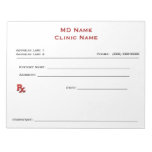Don’t Lose Your Patients
Many of the ways money slips through the cracks aren’t even known to the physicians losing the cash. One great example of this is call abandonment. Not answering the phone when it rings can cost you a bundle. Elizabeth Woodcock, president of Woodcock and Associates, an Atlanta-based physician practice consulting firm, says the call abandonment rate is as high as 28 percent in many practices.
As odd as it sounds, it’s easy to see how this happens. Some practices are so busy that no one has a chance to grab the phone before the caller gives up. A patient trying to make an appointment might go to the hospital or to urgent care or just call another physician. Online scheduling or scheduling through the portal can help with this. But if your patient base isn’t comfortable with those methods, you need to make sure someone answers the phone. “Most telecom systems offer an abandonment rate as a standard feature,” says Woodcock. Take a look at yours and see if you can recoup some lost income by addressing this problem.
Another way business is lost and doctors don’t even know it is when referrals “leak” out of the practice. Doctors in a multi-specialty practice usually refer patients to each other. A primary-care physician who wants a patient to see a cardiologist will naturally refer that patient to a cardiologist in the same group. However, if the receiving physician doesn’t follow up on the referral, the patient is lost to another practice. “We often see that practices are not following up on referrals,” says Woodcock. “If the staff in charge of calling patients to schedule appointments doesn’t make those calls in a timely manner, the business is lost, and the doctor will never even know.” Analyzing in-practice referrals to see if they are resulting in appointments could highlight a big leak you didn’t know you had. If your staff doesn’t have time to take care of this, “the solution,” says Woodcock, “is not hiring more people. You need to invest in a self-scheduling system.”
You may be billing for less than you’re entitled to. A careful analysis of fee schedules could earn you a raise. “Analyze your fee schedules and make sure your practice fees cover the allowable fees from your highest payer,” advises Tammie Olson of Management Resource Group, an Ocean Springs, Miss., a firm offering financial management and support services for the healthcare community. “For example, if you accept Aetna but set your fee schedule with the Blue Cross Blue Shield allowable amount, you may be leaving money on the table if Aetna reimburses more.” Olson also recommends taking a look at your payers’ fee schedules to make sure their reimbursements aren’t too low. “If you have a payer whose fees are too low, you might want to renegotiate your contract. If they won’t allow you to renegotiate, then you may want to consider dropping this payer.”
In most cases finding and fixing these problems takes little time and little or no expense. Ignoring them is like walking away from money.
As odd as it sounds, it’s easy to see how this happens. Some practices are so busy that no one has a chance to grab the phone before the caller gives up. A patient trying to make an appointment might go to the hospital or to urgent care or just call another physician. Online scheduling or scheduling through the portal can help with this. But if your patient base isn’t comfortable with those methods, you need to make sure someone answers the phone. “Most telecom systems offer an abandonment rate as a standard feature,” says Woodcock. Take a look at yours and see if you can recoup some lost income by addressing this problem.
Another way business is lost and doctors don’t even know it is when referrals “leak” out of the practice. Doctors in a multi-specialty practice usually refer patients to each other. A primary-care physician who wants a patient to see a cardiologist will naturally refer that patient to a cardiologist in the same group. However, if the receiving physician doesn’t follow up on the referral, the patient is lost to another practice. “We often see that practices are not following up on referrals,” says Woodcock. “If the staff in charge of calling patients to schedule appointments doesn’t make those calls in a timely manner, the business is lost, and the doctor will never even know.” Analyzing in-practice referrals to see if they are resulting in appointments could highlight a big leak you didn’t know you had. If your staff doesn’t have time to take care of this, “the solution,” says Woodcock, “is not hiring more people. You need to invest in a self-scheduling system.”
Check Your Fees
You may be billing for less than you’re entitled to. A careful analysis of fee schedules could earn you a raise. “Analyze your fee schedules and make sure your practice fees cover the allowable fees from your highest payer,” advises Tammie Olson of Management Resource Group, an Ocean Springs, Miss., a firm offering financial management and support services for the healthcare community. “For example, if you accept Aetna but set your fee schedule with the Blue Cross Blue Shield allowable amount, you may be leaving money on the table if Aetna reimburses more.” Olson also recommends taking a look at your payers’ fee schedules to make sure their reimbursements aren’t too low. “If you have a payer whose fees are too low, you might want to renegotiate your contract. If they won’t allow you to renegotiate, then you may want to consider dropping this payer.”
In most cases finding and fixing these problems takes little time and little or no expense. Ignoring them is like walking away from money.




No comments:
Post a Comment